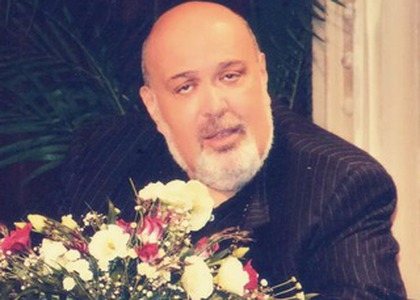> [Archived] Interviews

Interview with Prof. Dr. Stephan Poen - musicologist, phoniatrist, Doctor of Medicine and Music
The first conference of the cycle "The Scene of Thoughts" organized at the Bucharest National Opera will take place on Tuesday, 23rd of January 2024. Entitled "Voices of Opera. Historical and Aesthetic Evocations", the event features Prof. Dr. Stephan Poen, musicologist, phoniatrist, Doctor of Medicine and Music.
What kind of topics will you be addressing at Tuesday's conference at the Romanian National Opera?
This conference is entitled "Voices of Opera. Historical and Aesthetic Evocations" is intended to mark the seventh anniversary of the inauguration of the current headquarters of the Bucharest National Opera. And, in this context, I will start from some precursory stages of the history of opera in Bucharest from the beginning until 1954, when the current headquarters was inaugurated. Then I will refer to the importance of the opera theater from a cultural and social point of view in our world and I will pay homage to the great personalities of Romanian opera who have reconciled their national career, on the stage of the Bucharest Opera, with their international career - obviously, very reductively penalized due to the fact that not all artists had the courage to go out into the wider world. There are artists who had the courage to stay and this courage was rewarded, because these artists remained in the national cultural heritage of Romanian music and voice. Today, those who are alive among the veterans enjoy this honor both internationally (as long as it was to be) and nationally.
Could you please briefly explain the field of study of analytic phonology?
Analytical phonology and the field of vocal aesthetics are doctrinal systems that I developed and launched for the first time during my work in Italy (three and a half decades) and in the world, following research carried out together with my beloved wife, the great artist Elena Cernei, one of the most valuable mezzo-sopranos of universal history.
Analytical phonology is the doctrinal system in which all aspects of physiology and technical preparation of the organism for the development of the phonatory phenomenon are studied in depth in theory and practice.
Vocal aesthetics is the doctrinal system which, starting from the fundamental parameters of sound (the four qualities: intensity, color, pitch and duration), we have obtained a theoretical and practical derivation of 35 parameters which can be used to quantify vocal behavior at the interpretative level, but at the same time can be applied in an informative and formative way to young people and artists who want to improve themselves in order to further develop their vocation and their own artistic abilities.
What drew you to the study of voice?
As a young child, I was an avid spectator of opera, operetta, philharmonic, I was drawn to voices. Voices impressed me the most; both spoken and sung voices. My visual memory did not develop. Instead, the auditory one - to perfection. I was enveloped by this state of grace, an ecstatic state that the great Romanian and then foreign opera artists I met conveyed to me. This encouraged me in my piano studies, as a young child, and in my singing studies, to deepen this mystery of the voice. As I was determined to go to medical school, I decided to specialise in phoniatrics, which is the medicine of the spoken and sung voice. And, starting from the bioclinical foundations of this speciality, with time, together with Elena Cernei, I have come to develop an original theoretical and practical edifice that provides didactic, pedagogical and therapeutic assistance tailored to each individual voice.
How do you see the connections between science and art from your perspective?
I am an interdisciplinary humanist, equidistantly placed between art and science, between music and medicine, between vocal aesthetics and analytical phonology. Science is very precise, but at the same time it can be modulating and expressive. It is not by chance that the great discoverers of science in all fields have had artistic, musical passions. Einstein loved music, he even studied the violin with his uncle. At the same time, art and singing are also art and science, because we are dealing with a music based on frequencies, they are hertz, the points of intonation integrated tonally are frequency entities of hertz quantification. So it is a physical phenomenon that has to be very exact and precise and only on a basis of exactness and precision can you build that aesthetic induction of different interpretative styles. So art and science can be intertwined. That is why there are many artists who have come from professional scientific university backgrounds, just as there are many scientists who have cultivated art. I would give an example. Liviu Comes, the composer and professor of composition, was a doctor who even became a professor of infectious diseases in Cluj, and then became a composer. The laryngoscope that revolutionised the vocal chord clinic and surgery was invented in 1857 not by a doctor, but by a bass and singing teacher - Manuel Garcia son. So here are situations of very harmonious interdisciplinarity in which science and art can intertwine thanks to accuracy, appreciation, but also that unctuous inflection of spontaneity of elaboration and interpretation.
Translated by Miruna-Gabriela Flipache,
University of Bucharest, Faculty of Foreign Languages and Literatures, MTTLC, year I
Corrected by Silvia Petrescu














